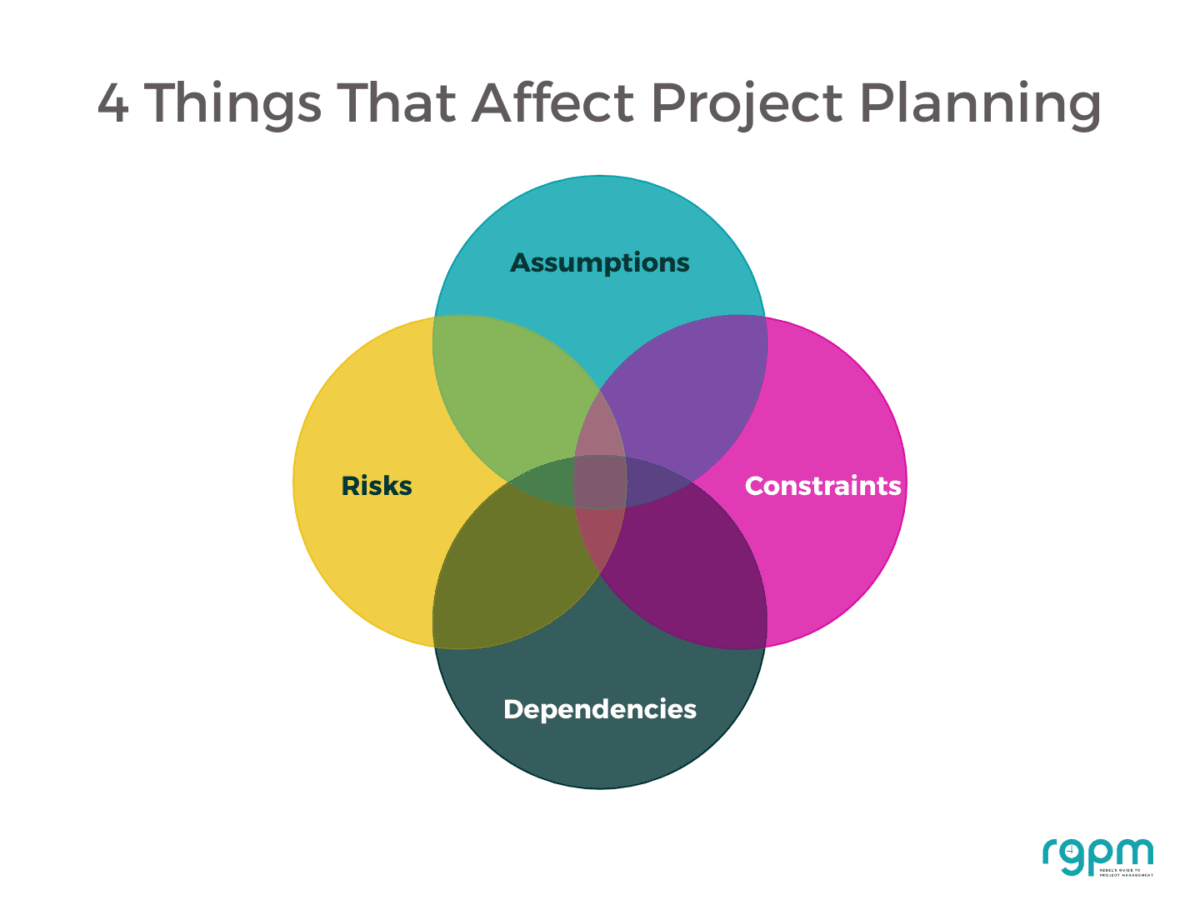7 Hidden dangers of project management (Or why even well-planned projects sometimes fail)
Despite your efforts to clearly define the scope, time and resources necessary to successfully complete the projects, things simply don’t always go according to plan.

Here are 3 examples of projects that didn’t go to plan.
During a company integration program, customer service levels dropped by 25-50% because the team management focused their efforts on reorganizing and changing employees’ roles and responsibilities, all with “the best of intentions”.
A bank’s inability to control several billion dollars of trust accounts because of hardware problems made all the depositors withdraw their trust money.
After $170m spent on a project to upgrade its computer system, the FBI project crumbled because the requirements were ill-defined from the beginning and the software didn’t function the way the agency had hoped.
These are just a few examples of projects that failed while wasting a tremendous amount of money and time.
The Standish Group’s CHAOS Report and other surveys report that project failure is more common than we would like. The more complex the project gets the more difficult it is to predict and control all the hurdles that may come up on the road to success.
Even if the team executes their tasks flawlessly and all the activities are carried out properly, we can never be sure that the project won’t flop.
So why do some projects crash to their doom? Here are 7 reasons for project failure so that you can avoid these on your projects.
1. Scope creep
It’s imperative to clearly define:
- What the project will deliver
- When it will be complete
- How much it will cost
- Who will do the work
- How the project will be done.
However, as much as we would like to keep everything on the same page, changes happen. Whether it’s the client who decided to change the scope of the work or the team faced some unforeseen difficulties, changes can kill a project.
For example, in June 2010 Chrysler merged with Fiat. The merger was not a successful one. Merging required some major organizational changes such as introducing new technology, creating a new management team and alternation in business processes and policies.
Consequently, the difference in corporate culture led to numerous issues causing anxiety among team members. They were unable to adapt to upgraded technology and modern methods which, eventually caused the company to throw in the towel.

2. Miscommunication
Big projects usually include multiple parties who all want to be an integral part of the project and who want to participate in decision-making process. While it’s to everybody’s benefit to produce the best possible results, people may have different goals and ambitions.
This is where the problems begin. Misunderstandings and conflicts arise, and the project starts to crumble.
Tip
Set meaningful and workable goals and put one person in charge of making final decisions.
Pixar, the computer animation film studio, established a group of people called “brain trust” who meet regularly to give some feedback on different stages of project development. While they are encouraged to talk about both positive and negative sides of the projects, the advice they give doesn’t have to affect the final outcome.
Whether some changes will be made or not depends solely on the film director’s point of view.
One thing that can bring the communication between all the parties to a whole new level is a project management tool. Active Collab helps your team stay organized, improves your project workflow and keeps everyone, from employees to clients, in the loop.
3. Working with the wrong people
PMI’s Pulse of the Profession report shows that for every $1 billion invested in the United States, $122 million was wasted due to poor project performance.
No matter how much time you allocate to carefully plan all the steps of the project, your project will struggle if you don’t establish a well-trained team of talented and skilled people. Organizational changes may require talented employees to accept new challenges, take new responsibilities and live up to expectations.
However, when existing staff don’t have the right knowledge and skills to successfully complete all the delegated tasks they end up feeling discouraged. Or not motivated enough to invest their true potential into the project. The team loses their critical knowledge base which inevitably leads to a huge loss of resources and ultimately, a failure.
Tip
Consider employees’ background (knowledge, skills, and history) and create a balanced team where each member will be able to leverage their talents and deliver the best possible result.
4. Lack of resources
Time and energy are tightly connected and together act as a fuel that keeps the project going.
Despite focusing their energy on achieving the ultimate goal, many businesses fall short because of lack of time or money. You can’t expect your business to thrive if you are working on a shoestring budget.
The same goes for human resources. Insufficient or over-assigned employees may suffer from burnout which causes poor production and dissatisfied customers. Not only does the project slow down but it also creates additional and bigger costs.
5. A Sponsor who leaves
Keeping everyone and everything in the loop is a key factor of success. But, what happens when your most valuable senior stakeholder suddenly decides to leave the project?
When the executive sponsor leaves in the middle of the project, it can have a detrimental effect on the entire team’s productivity as it can hurt the team’s morale and put off the stakeholders. Other leaders have to face the wreckage this leaves behind.
Tip
You can’t stop your sponsor leaving but you can ensure that you have a good relationship with them, are warned about their impending departure and can plan together to transition to a new sponsor.
6. Not focusing on quality
An efficient team will work towards the same goal – to produce a quality product that meets all the clients’ expectations and needs.
Ambitious goals for performance, robustness and reliability can soon drive the project to a failure. From feature creep to technology updates, there are various reasons why things can go wrong when you don’t plan for quality in your project plan.
Take Microsoft, for example (April 2021: link to case study removed as broken). Its Xbox video game console experienced many issues from the very beginning.
First, journalists encountered a problem when connecting it to the internet and then the public complained that the console damaged game disks and that the disks could no longer be used.
The repairs of the console increased the costs by $1 billion and the top gaming executive left the company. Continuing at any cost and returning to the previous stages of the project was simply not a realistic solution.
7. An inexperienced project manager
If we take into account the role and all the responsibilities of a project manager, it’s no wonder that many people think that a project manager has the biggest impact on the project’s outcome. They are not only responsible for making sure projects are completed on time and within budget, but they also work with clients and manage other project managers.
The reason why some project managers fail to deliver positive results is not the lack of qualifications or certificate, but the inability to communicate ideas clearly and drive the initiative. A successful project manager should have exceptional social skills and should get the necessary training in project management.
Although managers believe that they will be able to identify and handle all challenges along the way, they simply can’t.
Whatever the cause of the project management failure, dealing with a problem is always a more meaningful solution than ignoring it.
Also, in this way, the team learns important lessons about all the gaps they need to bridge their way to success and gain invaluable knowledge that will help them achieve success in projects to come.
A version of this article first appeared in 2017.

